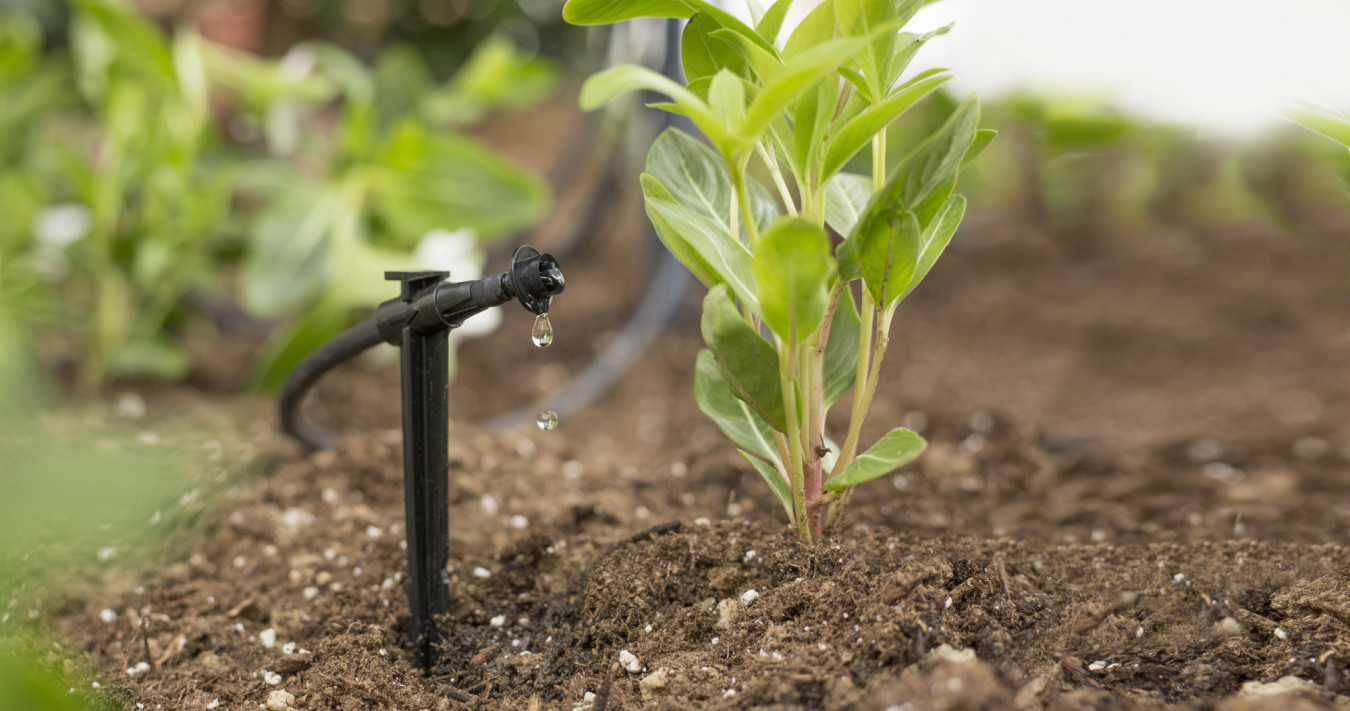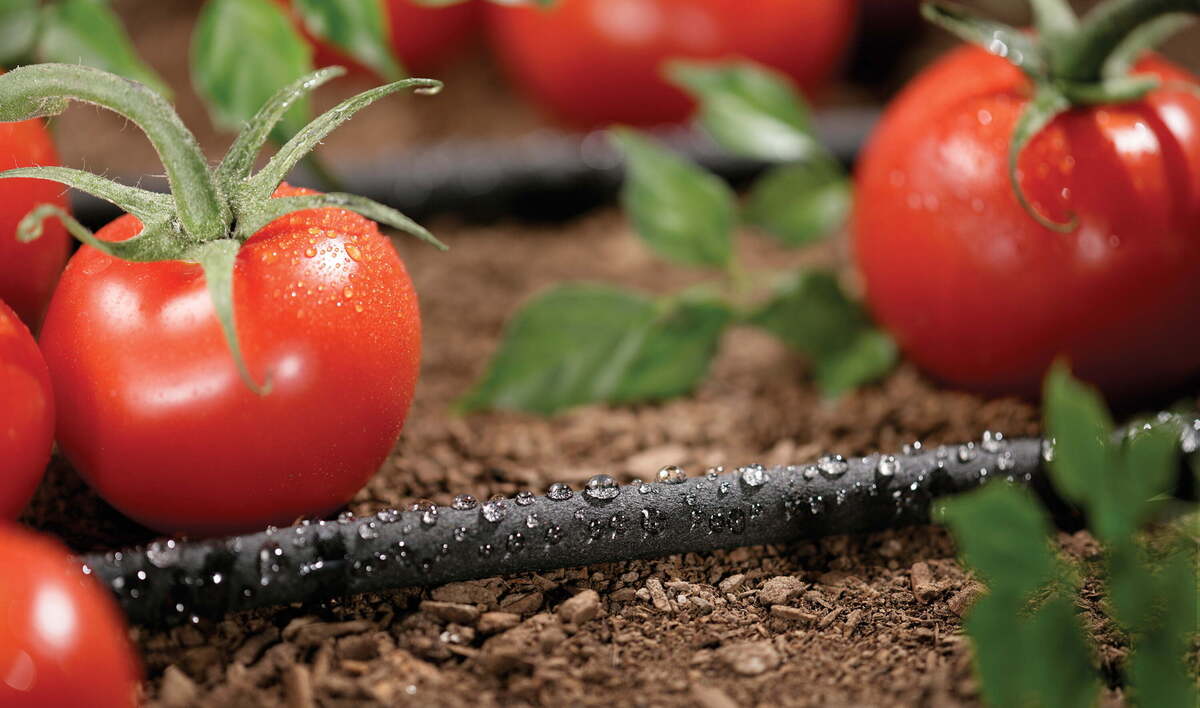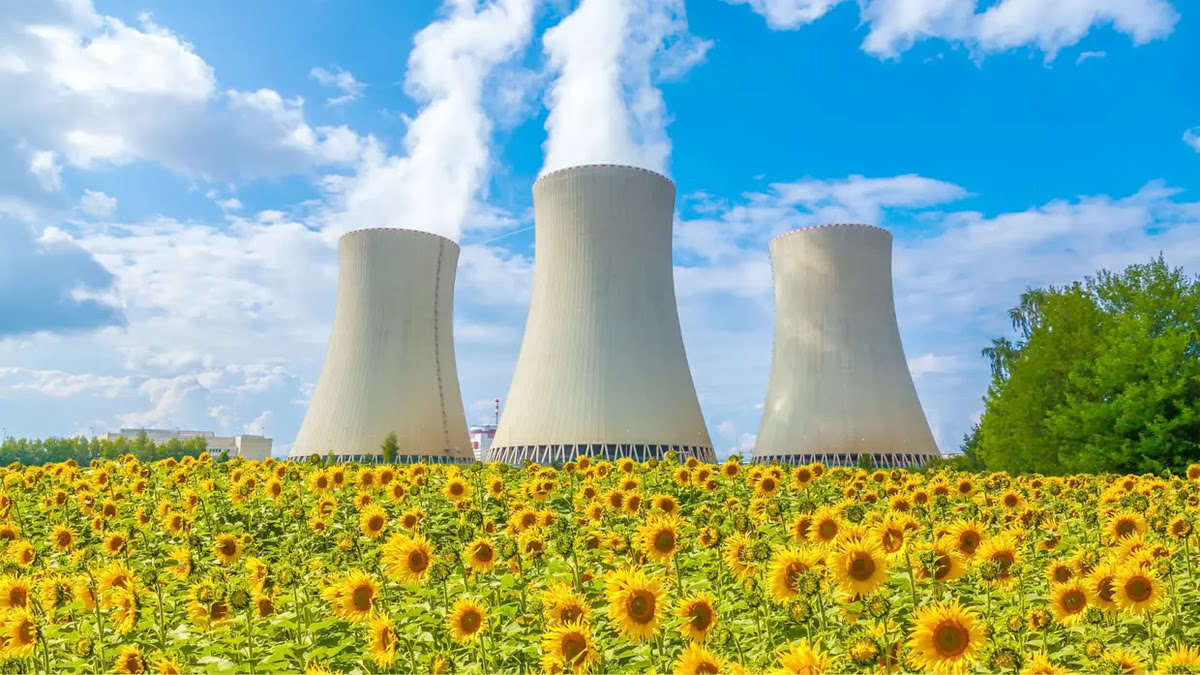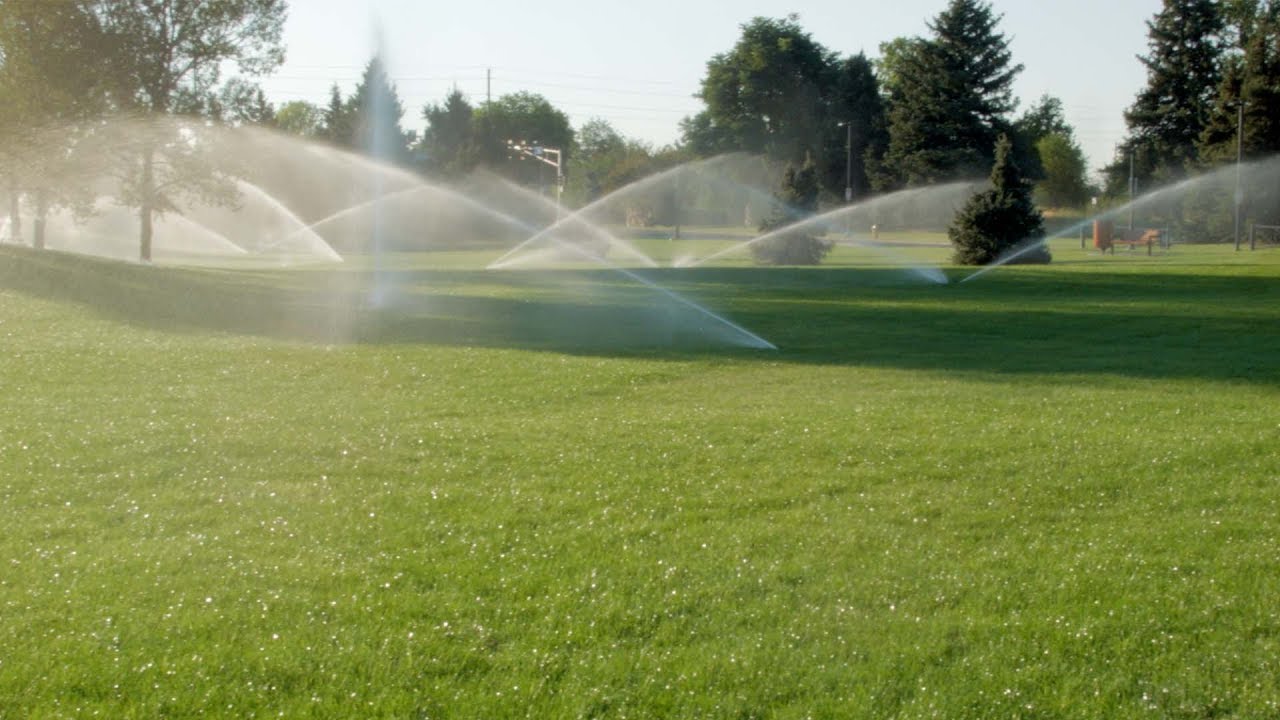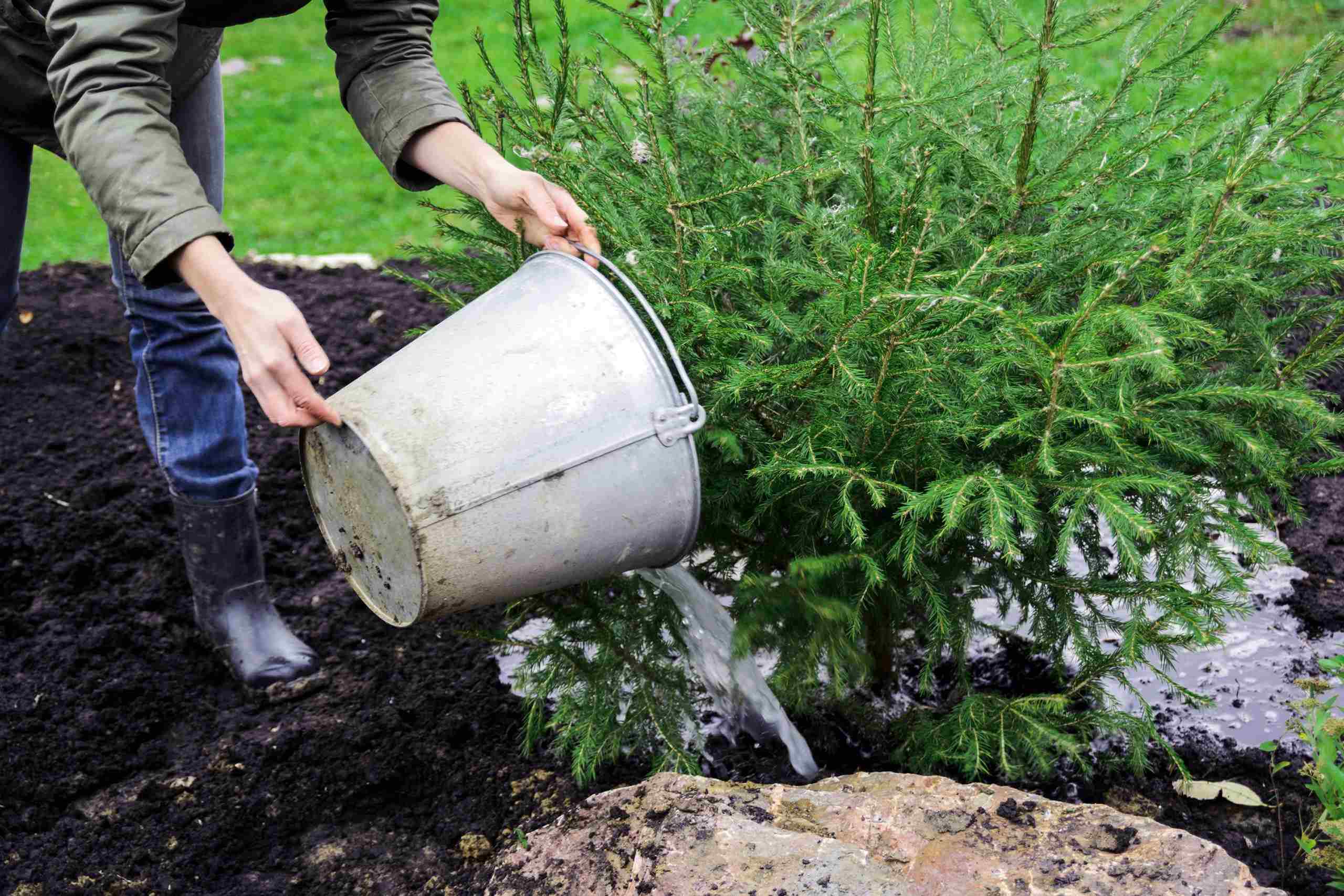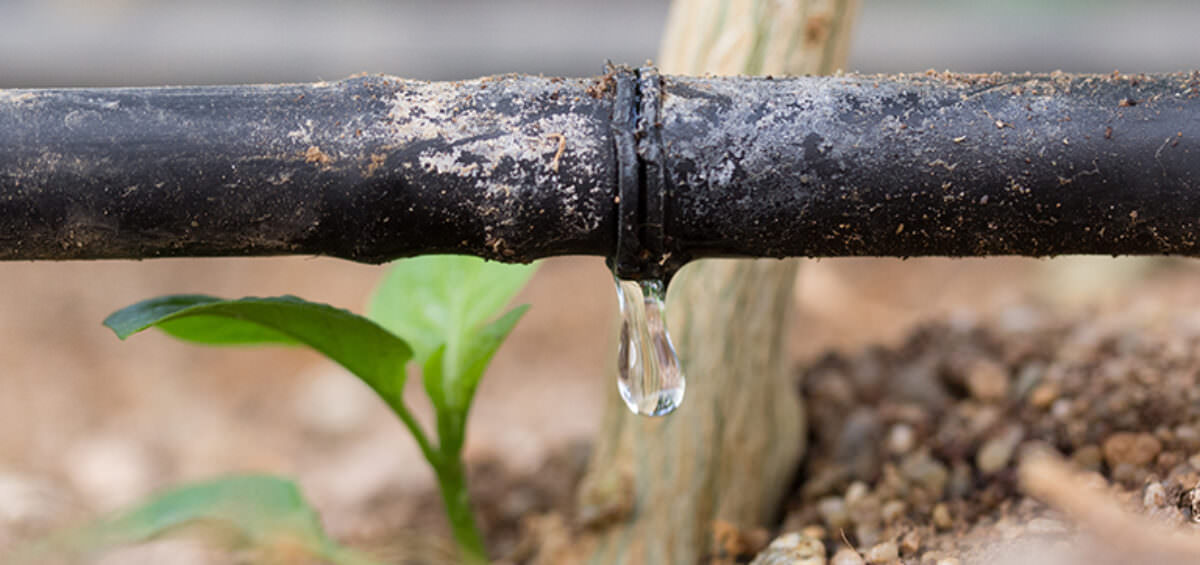Home>Gardening Basics>Tools and Equipment>How Does Irrigation Affect Aquifers?
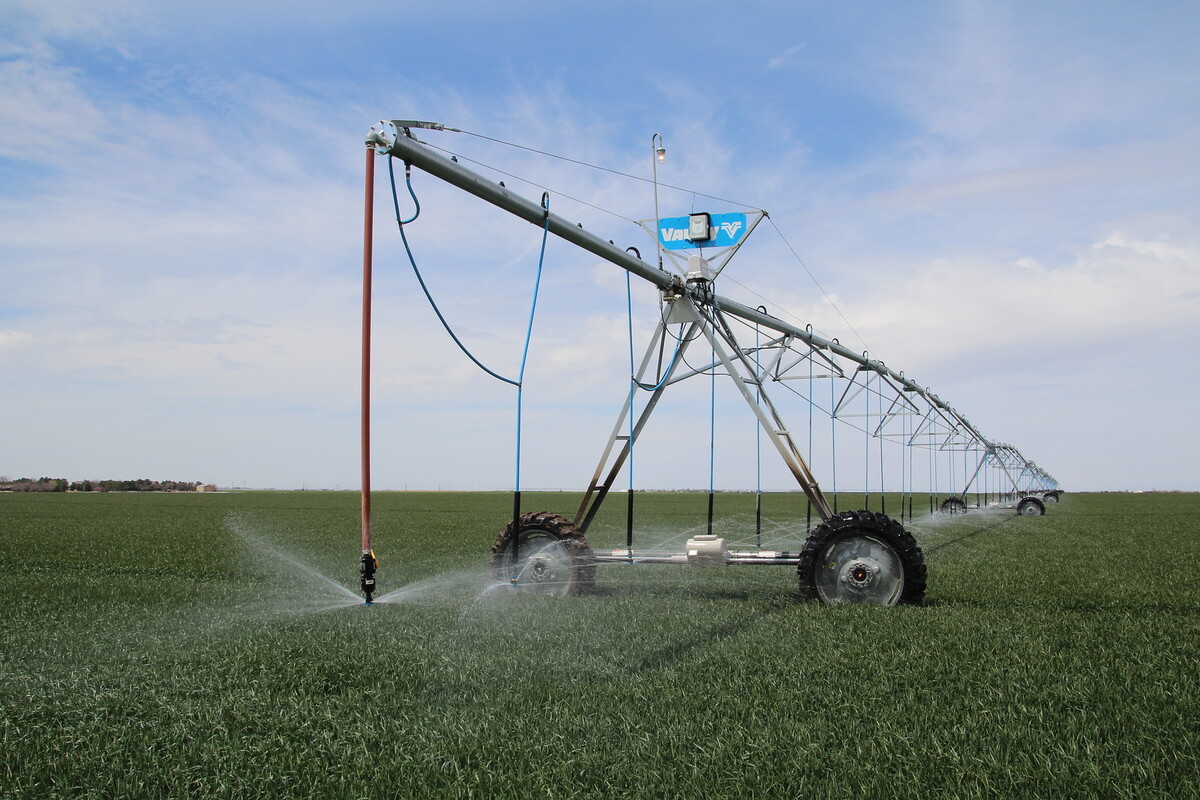

Tools and Equipment
How Does Irrigation Affect Aquifers?
Modified: February 8, 2024
Discover how irrigation impacts aquifers and learn about the essential tools and equipment needed for sustainable water management.
(Many of the links in this article redirect to a specific reviewed product. Your purchase of these products through affiliate links helps to generate commission for Chicagolandgardening.com, at no extra cost. Learn more)
Table of Contents
Introduction
Irrigation is a vital process in agriculture that involves the artificial application of water to land to promote the growth of crops. It plays a crucial role in helping farmers meet the demands of a growing population and ensuring food security. However, the impact of irrigation on aquifers, which are underground layers of water-bearing rocks, has become a major concern in recent years.
Aquifers are essential sources of fresh water, providing drinking water for communities and supporting ecosystems. They are replenished through natural processes like rainfall, but excessive irrigation can disrupt this delicate balance. As a result, the overuse and mismanagement of irrigation practices can lead to a range of negative consequences that affect both the quantity and quality of groundwater.
This article will explore the impact of irrigation on aquifers and discuss sustainable practices that can help mitigate these effects. By understanding the relationship between irrigation and aquifers, we can implement better strategies to manage our water resources and ensure their long-term sustainability.
What is Irrigation?
Irrigation is the artificial application of water to land areas to facilitate the growth and development of crops. It is a practice that dates back thousands of years, with humans harnessing water sources to supplement rainfall and meet the water requirements of agricultural plants.
There are various methods of irrigation, each suited to different types of crops, soil conditions, and water availability. Some commonly used irrigation techniques include surface irrigation, sprinkler irrigation, and drip irrigation.
Surface irrigation involves flooding or furrowing the land with water, allowing it to infiltrate the soil and reach the plant roots. Sprinkler irrigation uses overhead sprinklers that distribute water in a manner similar to rainfall. Drip irrigation, on the other hand, delivers water directly to the plant roots through a network of tubes and emitters, minimizing water loss through evaporation or runoff.
The purpose of irrigation is to ensure that crops receive adequate water throughout their growth cycle, especially in areas where rainfall is insufficient or erratic. By supplying water to the root zone, irrigation promotes the efficient absorption of nutrients, photosynthesis, and overall plant health.
Irrigation also allows for the cultivation of crops in regions that would otherwise be unsuitable due to arid or semi-arid climates. It has played a crucial role in expanding agricultural production and meeting the food demands of growing populations around the world.
However, while irrigation is essential for agriculture, its widespread use has raised concerns about its impact on aquifers and overall water resources. It is important to strike a balance between meeting the water needs of crops and sustainable water management to ensure the availability of water for future generations.
The Importance of Aquifers
Aquifers are integral components of the Earth’s water cycle and play a crucial role in supporting various ecosystems and human activities. These underground water reservoirs consist of permeable rocks or sediment layers that can store and transmit water. They act as natural storage systems, supplying water through wells and springs, and replenishing surface water bodies such as rivers and lakes.
Aquifers are essential sources of fresh water, providing drinking water to millions of people around the world. They serve as reliable sources of water for domestic, industrial, and agricultural purposes. In many regions, groundwater extracted from aquifers is the primary source of irrigation water, ensuring food security and supporting agricultural livelihoods.
Furthermore, aquifers sustain terrestrial and aquatic habitats by providing a constant flow of water to streams, wetlands, and rivers. They serve as critical habitats for numerous plant and animal species that depend on groundwater for their survival. Aquatic ecosystems, such as wetlands, are particularly dependent on the sustained groundwater inflows from aquifers to maintain their unique biodiversity.
Aquifers also act as a natural buffer during periods of drought or low rainfall. They store excess water during wet seasons, which can be accessed during dry periods to mitigate the impacts of water scarcity. This helps to sustain ecosystems, as well as support human activities such as agriculture and industry.
Moreover, aquifers play a role in maintaining the stability and integrity of the Earth’s geology. The pressure exerted by groundwater within aquifers helps support the structure of overlying rocks, preventing land subsidence and geological instability.
Given their vital role in water supply, ecological balance, and geological stability, it is imperative to recognize the importance of aquifers and take measures to ensure their sustainability. Understanding the impact of irrigation on aquifers is crucial in implementing effective water management strategies that safeguard these valuable resources for future generations.
Impact of Irrigation on Aquifers
While irrigation is essential for agriculture, it can have significant impacts on aquifers if not properly managed. Excessive and unsustainable irrigation practices can lead to various challenges that affect the quantity and quality of groundwater in aquifers.
One of the primary impacts of irrigation on aquifers is groundwater withdrawal. As farmers extract water from wells and irrigation systems, it depletes the water stored in aquifers. If withdrawal rates exceed recharge rates, the aquifer can become depleted, leading to a decreased water table and potentially causing wells to run dry. This can have detrimental effects on both agricultural productivity and the availability of drinking water.
In addition to depletion, another concern associated with irrigation is saltwater intrusion. When excessive irrigation water is used without proper drainage systems, it can raise the water table and create favorable conditions for saltwater from nearby oceans or seas to intrude into freshwater aquifers. This intrusion not only makes the water unfit for consumption and irrigation but also damages the delicate balance of ecosystems that rely on freshwater resources.
Furthermore, irrigation can impact the quality of groundwater. As water infiltrates through the soil, it can pick up various pollutants such as fertilizers, pesticides, and herbicides used in agricultural practices. If these substances are not managed properly, they can contaminate the groundwater in aquifers, leading to potential health and environmental issues.
Unregulated irrigation can also result in inefficient water use, with a significant amount of water lost through evaporation and runoff. This reduces the overall efficiency of irrigation systems and exacerbates the strain on aquifers, leading to increased water scarcity and the inability to meet agricultural and domestic water demands.
It is essential to address these impacts through sustainable irrigation practices that aim to optimize water use and minimize the stress on aquifers. By implementing efficient irrigation techniques like drip irrigation and adopting precision agricultural practices, farmers can reduce water wastage and improve the overall efficiency of water use.
Furthermore, integrated water management approaches that include water conservation measures, such as water recycling and reusing agricultural drainage water, can help reduce the pressure on aquifers. Implementing effective water governance and regulation frameworks can also contribute to sustainable irrigation practices and protect the long-term viability of aquifers.
By understanding and mitigating the impacts of irrigation on aquifers, we can ensure the availability of groundwater resources for future generations while maintaining a balance between agricultural production and sustainable water management.
Groundwater Withdrawal
Groundwater withdrawal is one of the significant impacts of irrigation on aquifers. As farmers extract water from wells and irrigation systems to meet the water needs of crops, it directly reduces the water stored in aquifers. This withdrawal of groundwater can have several consequences that affect the overall health and sustainability of aquifers.
When groundwater is withdrawn at unsustainable rates, it can lead to the depletion of aquifers. Depletion occurs when the rate of water extraction exceeds the rate of natural recharge, which is the replenishment of water in aquifers through processes like rainfall and infiltration. As a result, the water table—the level of water within the aquifer—can drop significantly, potentially causing wells to run dry and reducing the availability of water for agriculture and other purposes.
Depletion of aquifers can have far-reaching effects beyond just water scarcity. It can lead to land subsidence, where the land surface sinks or settles due to the loss of support from the underlying aquifer. This can cause damage to infrastructure, including buildings, roads, and underground pipes, and disrupt the natural functioning of ecosystems that rely on healthy groundwater levels.
Moreover, excessive groundwater withdrawal can impact the flow of water in rivers, streams, and wetlands. Aquifers play a crucial role in maintaining baseflow, which is the sustained flow of water in surface water bodies during dry periods or low rainfall. When aquifers are depleted due to irrigation, it can reduce baseflow, leading to negative impacts on aquatic habitats, wildlife, and the overall health of ecosystems.
It is crucial to manage groundwater withdrawal by implementing sustainable practices to prevent the overexploitation of aquifers. This includes setting withdrawal limits that are based on scientific knowledge of aquifer recharge rates, projected water demands, and ecological needs.
Water conservation measures, such as promoting the use of efficient irrigation techniques and adopting precision agriculture practices, can help reduce the amount of water extracted from aquifers. Techniques like drip irrigation, which deliver water directly to the plant roots, maximize water use efficiency and minimize wastage.
Additionally, implementing groundwater monitoring programs can provide valuable data on aquifer levels, recharge rates, and water quality. This information can help inform decision-making processes and enable policymakers to develop effective water management strategies and regulations.
By managing groundwater withdrawal through sustainable practices, we can ensure the long-term viability of aquifers, maintain a sustainable water supply for agriculture and other sectors, and preserve the ecological integrity of aquatic ecosystems that depend on groundwater resources.
Aquifer Depletion
Aquifer depletion is a significant concern resulting from the excessive extraction of groundwater for irrigation purposes. When the rate of water withdrawal from aquifers exceeds the rate of natural recharge, it leads to an imbalance, causing aquifer depletion. This depletion poses numerous challenges and has significant consequences for both human and natural systems.
One of the primary impacts of aquifer depletion is the lowering of the water table, which is the level at which water is found within the aquifer. As the water table drops, it becomes increasingly difficult for wells and other water extraction sources to access water. This can lead to wells drying up, impacting the availability of water for agriculture, drinking water supplies, and other domestic and industrial purposes.
Aquifer depletion can also result in land subsidence, where the land surface sinks or settles due to the compaction of underlying sediments. This subsidence can cause irreversible damage to infrastructure, including roads, buildings, and pipelines. It can also disrupt ecosystems, such as wetlands, that rely on groundwater levels to maintain their hydrological balance.
Furthermore, aquifer depletion can lead to the loss of ecosystems that depend on the sustained flow of groundwater. Reduced groundwater levels can negatively impact the health and function of freshwater habitats, such as rivers, streams, and wetlands. It can result in the loss of important animal and plant species, as well as damage critical habitats that rely on groundwater for their survival.
In addition to ecological consequences, aquifer depletion also has economic implications. When aquifers are depleted, farmers may struggle to access the necessary water for irrigation. This can lead to reduced crop yields, financial losses, and even the abandonment of farmland. It can also jeopardize local economies that rely on agriculture as a primary source of income and employment.
Addressing aquifer depletion requires a multi-faceted approach that emphasizes sustainable water management practices. This includes implementing water conservation measures, such as efficient irrigation techniques, crop rotation, and water-efficient agricultural practices. Effective land-use planning and water allocation strategies are also essential to ensure the equitable distribution of water resources and reduce the strain on aquifers.
Additionally, promoting public awareness and education about the importance of responsible groundwater use can encourage behavioral changes and more sustainable water consumption practices. Monitoring and regulating groundwater extraction, setting limits on withdrawal rates, and implementing water pricing mechanisms can further incentivize water conservation efforts.
By taking proactive measures to address aquifer depletion, we can ensure the availability of water resources for future generations, support sustainable agriculture, and protect the integrity of ecosystems that depend on groundwater resources.
Saltwater Intrusion
Saltwater intrusion is a significant consequence of improper and excessive irrigation practices that can have detrimental effects on aquifers. It occurs when saltwater from oceans or seas infiltrates into freshwater aquifers, leading to a decline in water quality and rendering the water unsuitable for consumption or irrigation.
Saltwater intrusion is primarily driven by two factors: excessive groundwater withdrawal and sea-level rise. When groundwater is extracted at a rate faster than it can be recharged, it creates a hydraulic gradient that draws saltwater toward the depleted aquifer. Additionally, with rising sea levels due to climate change, the boundary between freshwater and saltwater can shift inland, exacerbating the problem.
Coastal regions are particularly vulnerable to saltwater intrusion, as they are in close proximity to the ocean. The excessive pumping of groundwater for irrigation in these areas can result in a decrease in the freshwater lens, which is the layer of fresh groundwater that floats on top of denser saltwater. When the freshwater lens becomes too thin, saltwater can intrude, contaminating the aquifer and rendering the water unfit for use.
The intrusion of saltwater into freshwater aquifers has several detrimental effects. Firstly, it affects the availability of safe drinking water. The salinity of the water increases, making it unsuitable for human consumption without expensive and energy-intensive desalination processes. This can result in water scarcity and health risks for communities that rely on groundwater as their primary water source.
Furthermore, the intrusion of saltwater can have severe ecological implications. Aquatic plants and animals that depend on freshwater ecosystems may not be able to tolerate the high salinity levels. This can lead to the loss of biodiversity and disrupt the delicate balance of ecosystems that rely on freshwater resources. In turn, the disruption of these ecosystems can have cascading effects on other species and overall ecosystem health.
To mitigate saltwater intrusion, it is essential to adopt sustainable water management practices. Implementing efficient irrigation techniques, such as drip irrigation, reduces excessive water use and minimizes the need for extensive groundwater extraction. Proper land-use planning and zoning restrictions can help prevent the over-pumping of groundwater in vulnerable coastal areas.
Additionally, constructing hydraulic barriers, such as subsurface dams or injection wells, can help create a physical barrier between saltwater and freshwater aquifers, preventing the intrusion of saltwater. Artificial recharge methods, which involve replenishing aquifers with excess freshwater during periods of high rainfall, can also help maintain freshwater levels and reduce the risk of saltwater intrusion.
Addressing saltwater intrusion requires a collaborative effort from governments, communities, and farmers to implement sustainable practices and raise awareness about the importance of responsible water use. By taking proactive measures, we can protect freshwater resources, maintain the health of ecosystems, and ensure the availability of safe drinking water for present and future generations.
Water Quality Issues
When it comes to the impact of irrigation on aquifers, water quality issues are a significant concern. Improper irrigation practices and the excessive use of fertilizers, pesticides, and herbicides in agriculture can lead to water contamination, affecting the quality of groundwater in aquifers.
One of the primary water quality issues associated with irrigation is the leaching of agricultural chemicals into aquifers. When excessive amounts of fertilizers are applied to agricultural fields, they can infiltrate into the soil and eventually reach the groundwater. This leads to increased concentrations of nitrates and other chemicals, making the water unfit for drinking and irrigation purposes.
Furthermore, pesticides and herbicides used to control pests and weeds in agricultural practices can also contaminate groundwater. These chemicals can percolate through the soil, bypassing natural filtration processes, and enter aquifers. Prolonged exposure to these contaminants is associated with health risks, including the potential for cancer, reproductive issues, and other adverse effects on human health.
Another concern is sedimentation, where excess soil particles are carried by irrigation water and deposited in aquifers. Sedimentation can reduce water storage capacity, clog the pores within the aquifer, and alter the natural flow of water, impacting both water quantity and quality. Sedimentation can also transport other contaminants, such as heavy metals and pathogens, which can further degrade water quality.
To address water quality issues, implementing best management practices in irrigation is crucial. These practices include proper nutrient management, efficient irrigation techniques, and integrated pest management strategies. By minimizing the use of fertilizers and pesticides, farmers can reduce the potential for groundwater contamination.
Conservation tillage practices, such as no-till or reduced tillage, can help prevent soil erosion, reduce sedimentation, and minimize the transport of contaminants into aquifers. Constructing sediment basins or implementing sediment traps can further prevent sedimentation and protect water quality in aquifers.
Regular monitoring of water quality through sampling and analysis is essential to ensure the early detection of any potential contamination. This allows for timely interventions and the implementation of corrective measures to safeguard groundwater quality.
Moreover, public awareness and education on the importance of responsible irrigation practices and the proper use of agricultural inputs can encourage farmers to adopt more sustainable approaches. Government regulations, water quality standards, and incentives for implementing sustainable practices can also play a vital role in protecting and preserving water quality in aquifers.
By addressing water quality issues through sustainable irrigation practices, we can protect the integrity of aquifers, maintain the availability of safe drinking water, and safeguard the health of ecosystems that depend on groundwater resources.
Sustainable Irrigation Practices
To mitigate the negative impact of irrigation on aquifers, it is crucial to adopt sustainable irrigation practices. These practices aim to optimize water use, minimize groundwater depletion, and preserve water quality. By implementing these practices, we can ensure the long-term sustainability of both our agricultural systems and our water resources.
1. Efficient Irrigation Techniques: Utilizing efficient irrigation methods, such as drip irrigation and precision sprinklers, can significantly reduce water wastage. These techniques deliver water directly to the roots of plants, minimizing evaporation and runoff. Implementing smart irrigation systems that use sensors and weather data can further optimize water use by providing real-time information on soil moisture levels and weather conditions.
2. Crop Water Management: Proper management of water for crops through techniques like deficit irrigation and scheduling irrigation based on plant needs can help conserve water. By matching irrigation schedules with the growth stages of crops and adjusting irrigation rates based on soil moisture, farmers can reduce water usage while maintaining crop health and productivity.
3. Soil and Water Conservation Practices: Implementing soil and water conservation practices, such as contour plowing, terracing, and mulching, can reduce soil erosion and improve water infiltration. Maintaining vegetative cover, especially during fallow periods, helps prevent evaporation and keeps the soil moist for the next irrigation cycle.
4. Nutrient and Pest Management: Implementing proper nutrient management practices can minimize nutrient leaching into aquifers. Conducting soil tests and applying fertilizers at appropriate rates and timings can ensure efficient absorption by crops, reducing the risk of groundwater contamination. Integrated pest management practices that prioritize biological controls and minimize pesticide use can also help protect water quality.
5. Water Recycling and Reuse: Adopting water recycling and reuse systems allows farmers to conserve water resources. Collecting and treating agricultural drainage water, as well as using treated wastewater for non-potable purposes like irrigation, reduces the demand for fresh groundwater and protects aquifers. This also reduces nutrient runoff and the potential for contamination.
6. Education and Outreach: Providing education, training, and information to farmers about sustainable irrigation practices is crucial. Extension services, farmer groups, and government agencies can play a role in disseminating knowledge, promoting the adoption of best practices, and providing support for transitioning to sustainable irrigation techniques.
7. Policy and Regulation: Governments can play a pivotal role in fostering sustainable irrigation practices by implementing policies and regulations. These can include setting water use efficiency targets, promoting water pricing mechanisms that incentivize conservation, and implementing water rights and permits that ensure equitable allocation and prevent over-pumping of aquifers.
By integrating these sustainable irrigation practices into agricultural systems, we can reduce the impact of irrigation on aquifers, protect water resources, conserve energy, improve crop yields, and promote the long-term sustainability of our food production systems.
Conclusion
Irrigation plays a crucial role in meeting the food demands of a growing population, but it can have significant impacts on aquifers if not properly managed. The overuse and mismanagement of irrigation practices can lead to groundwater depletion, saltwater intrusion, compromised water quality, and ecological disruption. To ensure the long-term sustainability of our water resources, it is essential to adopt sustainable irrigation practices.
Efficient irrigation techniques, such as drip irrigation and precision sprinklers, optimize water use and minimize wastage. Crop water management strategies, coupled with proper nutrient and pest management practices, can further conserve water and protect water quality. Implementing soil and water conservation practices, including maintaining vegetative cover and practicing contour plowing, can help prevent erosion and improve infiltration.
Water recycling and reuse, along with the adoption of smart irrigation systems, minimize the strain on aquifers and reduce the demand for fresh groundwater. Education, outreach, and capacity building initiatives are crucial in promoting the adoption of sustainable practices and fostering a culture of responsible water use among farmers.
Additionally, effective policies and regulations, such as water pricing mechanisms, water rights, and permits, are essential in promoting sustainable irrigation practices and preventing overpumping of aquifers. Monitoring and managing groundwater withdrawal rates are vital to maintain the balance between water extraction and recharge.
By implementing these sustainable irrigation practices, we can protect aquifers, ensure the availability of safe drinking water, preserve ecological integrity, and support long-term agricultural productivity. It is our collective responsibility to conserve and manage our water resources wisely, taking into consideration not only our immediate needs but also those of future generations.


